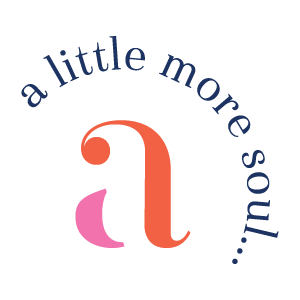The Integral Role of Stylescapes
Have you ever struggled with clearly communicating what you wanted or thought you knew what you wanted, only to realise it wasn't the right fit? Have you ever experienced thoughts like, 'This isn't what I pictured'? Maybe you had to explain your 'vision' to someone and ended up sounding like you were speaking gibberish, or it wasn't translated effectively, resulting in a visual misalignment.
Explore why we've incorporated Stylescapes into our branding, design, and illustration process. Uncover how this strategic approach can profoundly affect and simplify your business. Stylescapes are a vital piece of our creative process, and we love the collaborative and communicative approach they bring.
What the Heck is a Stylescape, Anyway? 🤷♀️
Imagine you're planning a road trip for your brand - you've got the destination in mind, but the route is a bit hazy. Stylescapes are like your trusty GPS system but for design adventures. They're your visual roadmap featuring snapshots of the scenic route—colours, fonts, and images—so everyone on the creative journey knows exactly where you're headed. It ensures your brand's expedition is a smooth, harmonious ride. Say goodbye to design detours and hello to the clarity of a well-prepared roadmap—aka, the magic of stylescapes!
Stylescapes provide a meticulously curated blend of images, textures, typography, and colours, brand elements strategically crafted to convey a distinct look and feel for a brand, website, interior space, or any other design undertaking.
Stylescapes serve as the connective bridge between the designer's ideas and our client's vision. Their purpose is to facilitate alignment, ensuring both parties reach a consensus on the design direction before any actual designing takes place.
Moodboard vs. Stylescape: The Twin Siblings with Different Careers 🎭
Stylescapes meticulously curate and arrange images, typography, and colours, crafting a cohesive snapshot that encapsulates the intended design. In contrast to the mood board's open-ended exploration, a Stylescape zeroes in on specific design elements, providing a glimpse of the potential final product.
Now, let's clear the stage for a moment to address a common mix-up. While they may be related, a Stylescape and a mood board are not the same party animals.
Imagine a mood board as a vibrant collage, where designers toss in snippets of inspiration, colour swatches, typography styles, and images that collectively capture the essence of a desired mood or aesthetic. It's the starting point of a creative journey, offering a visual brainstorming session where the boundaries are fluid, and the goal is to evoke a feeling rather than define concrete design elements. Mood boards are exploratory, setting the stage for the design process by sparking ideas and prompting discussions on the general vibe and atmosphere of a project. Designers are not the only ones who use mood boards as part of their process.
Now, a stylescape is the refined sibling of the mood board, a sophisticated evolution in the design process. Imagine it as the mood board's focused counterpart, aiming for a more intentional visual direction.
Stylescapes act as visual blueprints, seamlessly bridging the gap between inspiration and execution. Their purpose is to ensure that every project stakeholder is on the same page before delving into the intricate details of the design work.
The Flavors of Stylescape: Mild, Medium, or Spicy? 🌶️
Ah, variety is the spice of life! Did you know that for each project, you might start with a buffet of Stylescapes? That's right! Think of it as choosing the seasoning level for your meal—mild, medium, or extra spicy. We present clients with a few initial Stylescape options, each dialling up or down certain elements that help gauge their preferences. It's like a tasting session. Based on the client's feedback, we craft the final Stylescape, which the client gives the chef's kiss of approval. 👌
What are the benefits of creating Stylescapes?
Benefits for the client:
Benefits for the designer:
Real-World Examples to Illustrate the Illustrious Stylescape
At Anema Designs, we use Stylescapes as part of our process to help facilitate an efficient process for our clients on a project. We have in the past couple of months utilised Stylescapes to help illustrate the visual direction in our branding projects with;
A manufacturing company specialising in high composite ceramic applications is undergoing a rebranding initiative to align with their brand archetype and positioning. As part of this process, we created two Stylescapes, each reflecting a mild and medium approach.
A brand strategy agency, focusing on a particular industry, we crafted Stylescapes boards with mild, medium, and spicy approaches.
A market research consulting firm that’s looking to position themselves differently in their industry, therefore we created a modern and a traditional Stylescape boards.
Learning how to effectively design Stylescapes is like discovering a shortcut to your destination. It streamlines our exploration of designs and minimises the rounds of revisions with clients. This efficiency is a boon, not just for us the designers who are itching to see our creations come to life but also for our clients eager to see their visions materialised without going too far with creating concepts and spending hours of time hoping that the designs have met our client's brief. Embracing Stylescapes as part of the design process allows visual storytelling, client communication, and design strategy.
We’re *obviously* super passionate about this topic so if you want to dive deeper with insights tailored to your business, book a complimentary 15-minute enquiry chat with us today. Together, we can work together and unlock a stronger brand with higher engagement and conversion rates.
Stay classy! ✌🏻
Referenced: TheFuturWant to get all the juicy goss about branding and illustration straight to your inbox?
Sign up for the newsletter and receive monthly newsletters!
Just like Mr Magorium’s Wonder Emporium, where we share a variety of (branding and illustration) tips that bridges the gap between designers and business owners.













